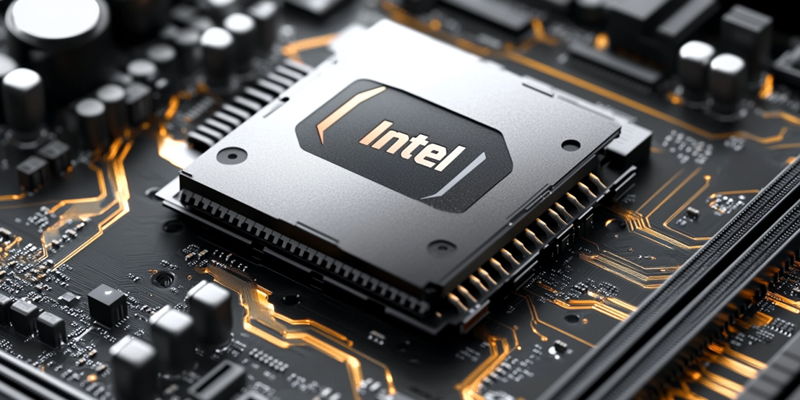Intel’s newly introduced Lunar Lake mobile architecture has generated significant interest due to its remarkable battery efficiency and technological advancements since it was first unveiled in June. The architecture was highlighted again during a paper launch on September 3, where Intel showcased its integration in various devices. Recently, Lenovo released a promotional video demonstrating the impressive battery life of its Yoga Slim 7i Aura Edition, utilizing the Lunar Lake processor, further igniting curiosity and discussions in the tech community. The video sequence captured the Lenovo laptop significantly outperforming Apple’s M2 and M3 MacBooks in a battery rundown test, lasting an astounding 23 hours and 54 minutes, which is roughly five and a half hours longer than the competing MacBooks.
Unprecedented Battery Efficiency
Lenovo’s Yoga Slim 7i Aura Edition Performance
The recognized efficiency displayed by Lenovo’s Yoga Slim 7i Aura Edition laptop entails the outcome of efforts to incorporate cutting-edge technology in designs. With the Lunar Lake processor, this laptop managed to last close to a day on a single charge during a battery rundown test. The test procedure involved playing a local H.264 video at 1080p resolution and 24 frames per second at 150 nits brightness. Such specific conditions make the result even more commendable as running continuous video playback typically consumes significant power. Lenovo’s almost 24-hour mark indicates a notable leap in battery performance benchmarks, further setting a high bar for competitors.
The Yoga Slim 7i Aura’s outcome also encourages a wider discussion regarding the potential of future mobile devices utilizing Intel’s processors. While Lenovo’s results are impressive, Dell has similarly claimed exemplary performance with their Lunar Lake-powered Dell XPS 13 laptop. Dell claims that this device can offer up to 26 hours of uninterrupted video playback. Such performances position these laptops as potential leaders in power efficiency in mobile computing, traditionally dominated by players like Apple. The significance of Intel’s technology is underscored by the practical benefits it offers in real-world scenarios, where long battery life becomes increasingly crucial for users.
Dell’s Counterclaim and Competitive Edge
Dell’s assertion about the XPS 13 achieving 26 hours of video playback highlights a deeper competition angle in the tech industry. Dell embraces Intel’s Lunar Lake technology in sophisticated ways to stand at par or ahead of competitive gadgets, and this claim fortifies Intel’s standing. Through such enhancements, laptops powered by Intel appear poised to offer durability exceeding previous expectations. However, the realm of competitive technology remains dynamic. Qualcomm’s Snapdragon X Elite/Plus chips provide significant battery performance, with boasts of up to 27 hours of video playback in some models.
Qualcomm’s chips, often featured in various Dell laptops, epitomize the challenge Intel anticipates in the market. The competition between Qualcomm and Intel indicates a broader trend where manufacturers strive to maximize efficiency and offer users prolonged battery life without compromising performance. As such, the rivalry among these tech giants can drive innovative advancement necessary for future mobile device enhancements. The overall picture showcases fascinating developments that reflect both the progress and competitive spirit propelling further technological achievements in the industry.
Technological Advancements and Strategic Impact
The Lunar Lake CPU: Core Ultra 7 258V
The cornerstone of Intel’s promising technology lies in the Lunar Lake CPU, particularly the core variant called Ultra 7 258V. This CPU distinctively stands out in the lineup, being outfitted with 32GB of DDR5 memory and running on Windows 11. As a higher-end option in the series, the Core Ultra 7 offers sizable power and efficiency without the increased energy consumption characteristic of the top-tier Core Ultra 9. The Ultra 9 variant, while potent, uses more power, making it less prevalent in devices that prioritize battery longevity.
A key technical distinction of the Lunar Lake architecture is its manufacturing process. It represents Intel’s first chipset produced entirely by TSMC using the 3nm process technology and notably integrates embedded memory. This characteristic is comparable to Apple’s M-series chips. Such an approach underscores Intel’s strategic pipeline in mobile CPU development, which aligns with a broader pursuit of high efficiency and advanced performance in portable devices. These technical strides reflect a harmonized orchestration designed to enhance mobile computing capabilities in contextual applications like prolonged media usage or intensive tasks.
Future Prospects and Market Dynamics
Lenovo’s Yoga Slim 7i Aura Edition laptop showcases impressive efficiency, thanks to its integration of cutting-edge technology. The laptop, powered by the Lunar Lake processor, lasted nearly a whole day on a single charge during a battery rundown test. This test played a local H.264 video at 1080p resolution and 24 frames per second, set at 150 nits brightness—a scenario that usually drains battery life quickly. Achieving almost 24 hours of continuous video playback sets a new standard for battery performance, positioning Lenovo ahead of many competitors in this area.
This remarkable battery life opens discussions on the future potential of mobile devices using Intel’s processors. While Lenovo’s results are noteworthy, Dell has also claimed outstanding performance with their Lunar Lake-powered XPS 13 laptop, boasting up to 26 hours of uninterrupted video playback. These advancements could make these laptops leaders in power efficiency, challenging dominant players like Apple. Intel’s technology stands out by providing practical benefits in real-life situations, underlining the growing importance of extended battery life for users today.

